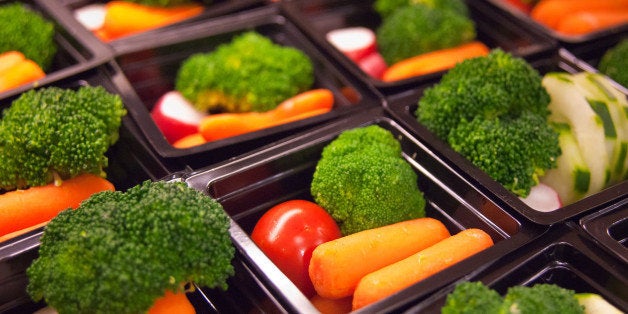
Twenty-two years ago, just a few months after the L.A. riot, a radical nutritionist came to our staff meeting and preached about the effects of junk food on the students we were teaching. He said the chips and sodas went directly to their unformed brains and encouraged the bad decision-making that led them to gang membership, unprotected sex, drugs, violence, and the hopelessness that inspired them to drop out of school.
We were a jaded bunch of teachers in that room so there was a lot of skepticism, but I've come to believe that there is at least some truth to what the dude was saying and have tried, whenever possible, to promote healthy eating to my students.
Mostly I've done this by letting them bring their lunch to my room and eating my own relatively healthy bag lunch in front of them. Early on I discovered I needed extra food for students who didn't have enough to eat. I got them to like vegetables and appreciate fresh fruit. At times I've brought whole meals for kids to eat on a regular basis. As soon as you do that you realize that they will eat almost anything, however healthy, if it is made with care and comes from someone who gives a damn.
Gangs still menace the streets of South Los Angeles. Violence, drug addiction, teenage pregnancy, and high levels of apathy still plague our students. Many more of them know about nutrition and healthy eating these days -- though most still eat chips and candy and drink soda all day (despite the fact that schools can no longer sell any of that) and consequently many of our students fade in the late morning and afternoon.
In 2014 it isn't radical nutritionists calling on educators to promote healthy eating. The First Lady of the United States has revised the federal Title One dietary guidelines. Gone are the days of President Reagan's ketchup as a vegetable. And it is about time the feds try to do something to combat childhood obesity and promote healthy eating habits.
Problem is, a lot of students aren't eating any of it. They say the federal food -- which at my school they call "county" -- is nasty, disgusting. They'll pick out what they consider edible and fill trash barrels with the rest.
I thought perhaps this outright rejection of the newer, healthier lunches was a function of their age, that the high school students I teach are just too used to the junk food. But I've spoken to elementary teachers and they say the same. One teacher I met, who is from Alabama, told me she brings granola bars to work so the students won't be hungry after lunch.
I don't think this is what Michelle Obama had in mind. Perhaps she didn't realize how this healthier food would actually be prepared or what it would ultimately taste like. Junk food is easily mass-produced. Food that is healthy, fresh, and flavorful is harder to make quickly and in large quantities.
Perhaps even more significant is how we serve the food -- line students up, yell at them, herd them through and push trays into their chests. It is all too often the same manner in which we feed them the knowledge, skills, and understanding of their so-called education.
Time to rethink how we feed our students -- food and otherwise -- before those trash barrels are overflowing with everything we've tried to give them.
